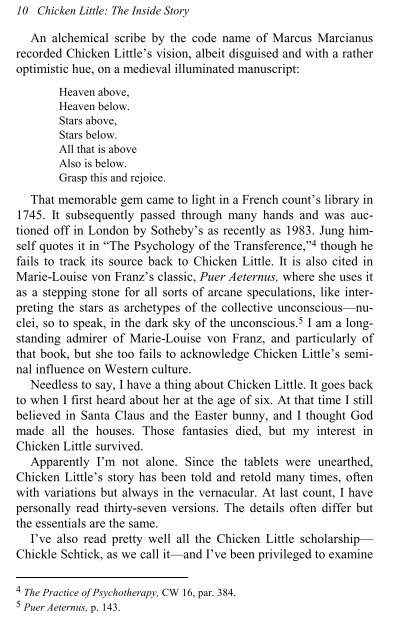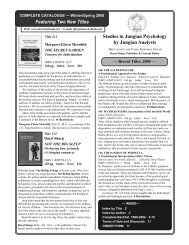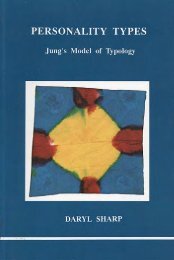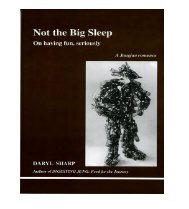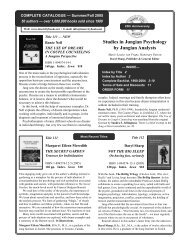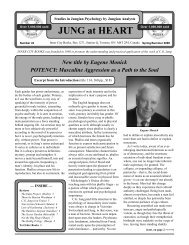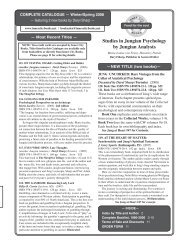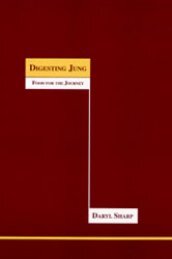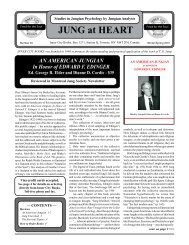Chicken Little: The Inside Story (A Jungian ... - Inner City Books
Chicken Little: The Inside Story (A Jungian ... - Inner City Books
Chicken Little: The Inside Story (A Jungian ... - Inner City Books
You also want an ePaper? Increase the reach of your titles
YUMPU automatically turns print PDFs into web optimized ePapers that Google loves.
10 <strong>Chicken</strong> <strong>Little</strong>: <strong>The</strong> <strong>Inside</strong> <strong>Story</strong><br />
An alchemical scribe by the code name of Marcus Marcianus<br />
recorded <strong>Chicken</strong> <strong>Little</strong>’s vision, albeit disguised and with a rather<br />
optimistic hue, on a medieval illuminated manuscript:<br />
Heaven above,<br />
Heaven below.<br />
Stars above,<br />
Stars below.<br />
All that is above<br />
Also is below.<br />
Grasp this and rejoice.<br />
That memorable gem came to light in a French count’s library in<br />
1745. It subsequently passed through many hands and was auctioned<br />
off in London by Sotheby’s as recently as 1983. Jung himself<br />
quotes it in “<strong>The</strong> Psychology of the Transference,” 4 though he<br />
fails to track its source back to <strong>Chicken</strong> <strong>Little</strong>. It is also cited in<br />
Marie-Louise von Franz’s classic, Puer Aeternus, where she uses it<br />
as a stepping stone for all sorts of arcane speculations, like interpreting<br />
the stars as archetypes of the collective unconscious—nuclei,<br />
so to speak, in the dark sky of the unconscious. 5 I am a longstanding<br />
admirer of Marie-Louise von Franz, and particularly of<br />
that book, but she too fails to acknowledge <strong>Chicken</strong> <strong>Little</strong>’s seminal<br />
influence on Western culture.<br />
Needless to say, I have a thing about <strong>Chicken</strong> <strong>Little</strong>. It goes back<br />
to when I first heard about her at the age of six. At that time I still<br />
believed in Santa Claus and the Easter bunny, and I thought God<br />
made all the houses. Those fantasies died, but my interest in<br />
<strong>Chicken</strong> <strong>Little</strong> survived.<br />
Apparently I’m not alone. Since the tablets were unearthed,<br />
<strong>Chicken</strong> <strong>Little</strong>’s story has been told and retold many times, often<br />
with variations but always in the vernacular. At last count, I have<br />
personally read thirty-seven versions. <strong>The</strong> details often differ but<br />
the essentials are the same.<br />
I’ve also read pretty well all the <strong>Chicken</strong> <strong>Little</strong> scholarship—<br />
Chickle Schtick, as we call it—and I’ve been privileged to examine<br />
4 <strong>The</strong> Practice of Psychotherapy, CW 16, par. 384.<br />
5 Puer Aeternus, p. 143.


